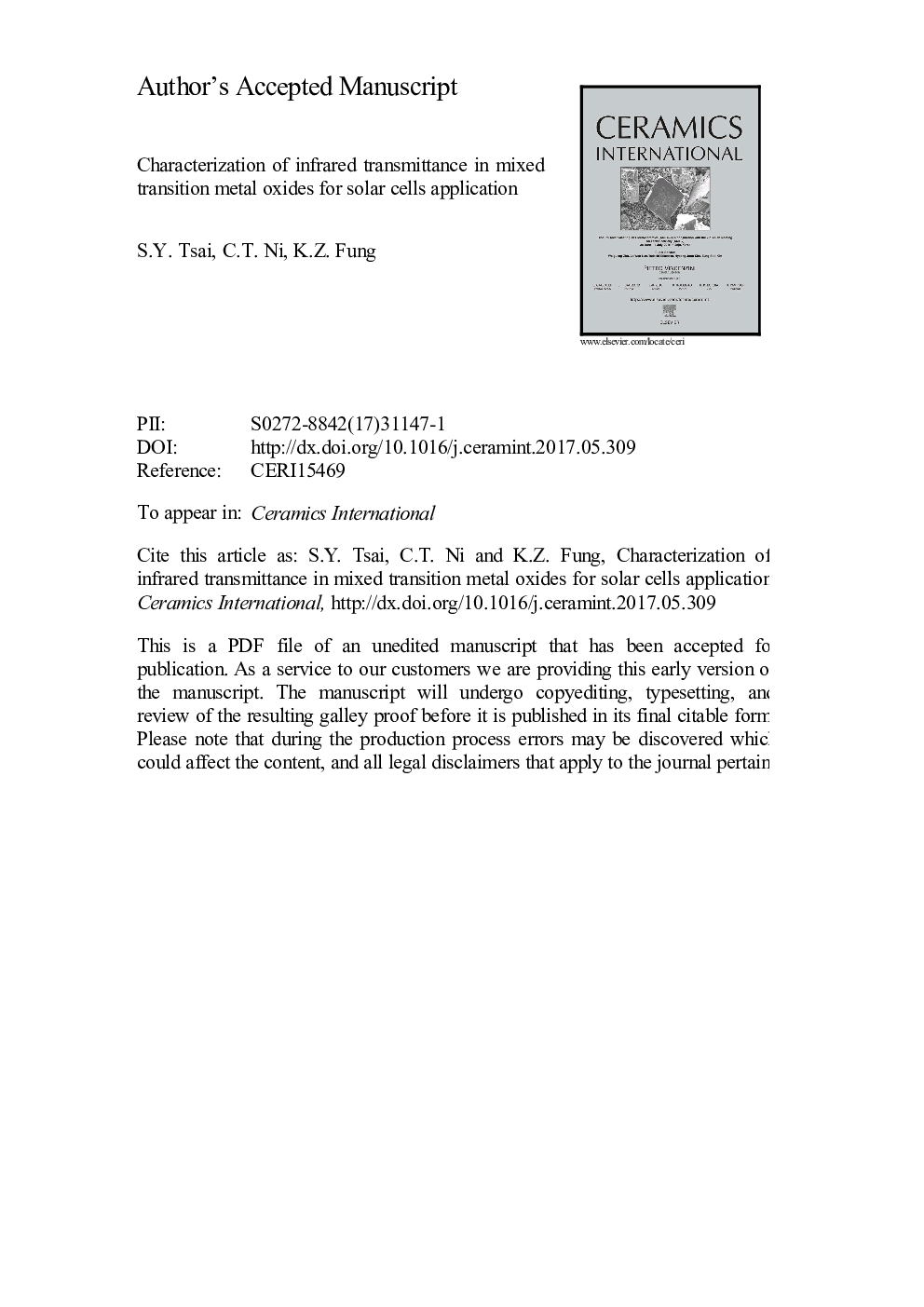| Article ID | Journal | Published Year | Pages | File Type |
|---|---|---|---|---|
| 5438868 | Ceramics International | 2017 | 30 Pages |
Abstract
The NiCo2O4 spinel structure was successfully fabricated using wet chemical route followed by calcination at 300 °C. It was observed that the structure of NiCo2O4 is highly dependent upon the temperature. At temperatures higher than 700 °C, NiCo2O4 tends to release one oxygen and change from spinel to rock-salt structure. To obtain a thin film of nickel-cobalt oxides using RF-magnetron sputtering, a solid film was deposited on a glass substrate using the sintered oxide target with the same composition. Furthermore, the electrical conduction and crystallization of the sputtered oxide thin film was also affected by the annealing environment. After detailed characterization and understanding of the phase transformation, a nickel-cobalt oxide film with the lowest resistivity of 0.05 Ω cm and a high transmittance of 90% in the infrared range was finally obtained. In addition, NiCo2O4 spinel thin films with high transmittance in infrared region were used for the front electrode of solar cells. As a result, the solar cells using IR-transparent NiCo2O4 layer exhibit an improved quantum efficiency, which leads to a higher short circuit current density, JSC.
Related Topics
Physical Sciences and Engineering
Materials Science
Ceramics and Composites
Authors
S.Y. Tsai, C.T. Ni, K.Z. Fung,
